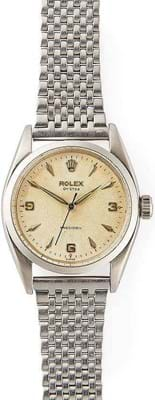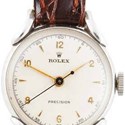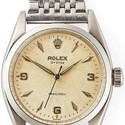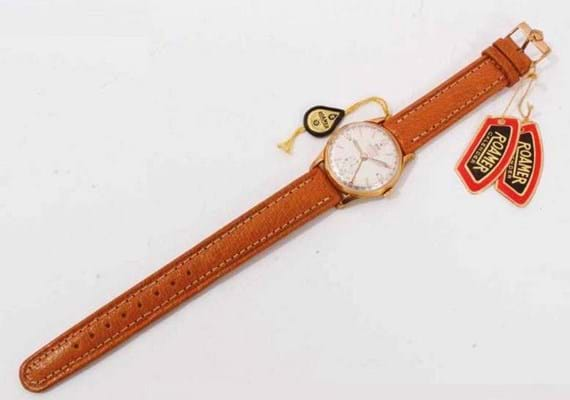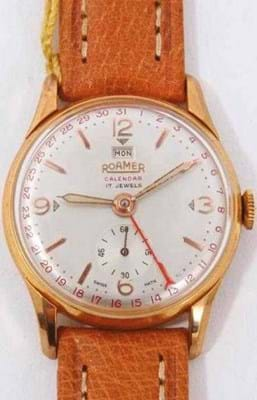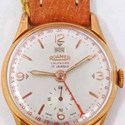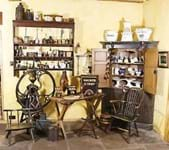Sarah Fergusson, the new head of watches at Lyon & Turnbull, decided she wanted to be a jewellery specialist in an auction house when she was 16. Her parents are great collectors of antiques, particularly pieces from the Arts & Crafts movement, so auctions, markets and antique shops were familiar haunts.
A history of art degree was followed by a post-graduate degree in collecting and collections and an MSc in museum theory and practice, before a Saturday job with auction house McTear’s in Glasgow became a full-time role.
While jewellery was the initial focus, Fergusson soon began to take an interest in the burgeoning market for vintage and ‘pre-loved’ wristwatches. Her focus shifted to timekeepers – the role she now takes on at L&T.
ATG: Tell us about your new role
Sarah Fergusson: It’s very focused and much of it involves sourcing watches for sale, from new and existing clients. I catalogue every piece, write condition reports and open the watches where appropriate. We have really focused on pushing the new department to our existing clients but an advertising campaign in national newspapers has been successful.

Sarah Fergusson, the new head of watches at Lyon & Turnbull.
I work from home, in our Glasgow office and Edinburgh saleroom, and will be in London for our Select Watches auctions.
Despite the pandemic, and while observing restrictions, we have managed to secure many great pieces from clients who are very keen to sell. Across all of L&T’s departments, 2020 was a fantastic year for sales as both buyers and sellers made the move online.
What have been the major changes in the market in the past decade?
The most significant one is the rise in prices for stainless steel watches, primarily sports or tool watches. Vintage examples have risen steadily in value in the last 10 years and the knowledge and the desire to own them stretches well beyond the core connoisseur-collector market.
We are seeing a younger audience coming to auction for the first time to seek these pieces. As a category, watches are really contributing a boost to the auction world in a way they weren’t a decade ago.
Many classic vintage issues are now priced in five or six figures. Where do you feel there is still value in the market?
As the rarest watches continue to break records, this is doing great things for the market as a whole.
But there are still entire sectors and brands that are accessible to many. For example, ‘vintage’ – a term once appropriate for watches from before the ‘quartz crisis’ – can now encompass watches from the 1980s. These are a great option for the new collector: they look different enough to satisfy a desire for something that is not modern but are very affordable in many cases.
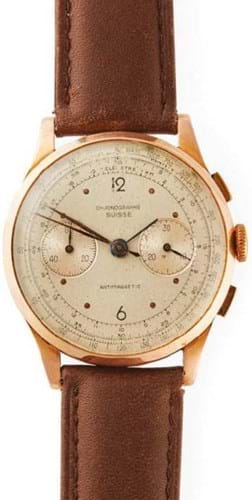
A 1940s Chronographe Suisse watch in 18ct gold case estimated at £250-350 at Lyon & Turnbull on March 9.
Seiko is a brand that until a couple of years ago we could not have considered including in a watches auction but many are now achieving prices in the middle to high hundreds.
This increase in value is good for the brand and good for the market but these prices are still accessible. There are Seiko vintage automatics priced under £100.
Not many watch specialists are female. Do you ever feel like a woman in a man’s world?
I am very aware that traditionally this is a man’s job and that the majority of valuable watches are male accessories. However, I have never felt this to be a negative thing and I haven’t experienced any negative attitudes towards me in my role.
Passion is a great leveller – if you are ever sceptical of someone within their given role, once you get talking on a topic of mutual interest, that scepticism soon dissipates and you are just two people talking about something you love.
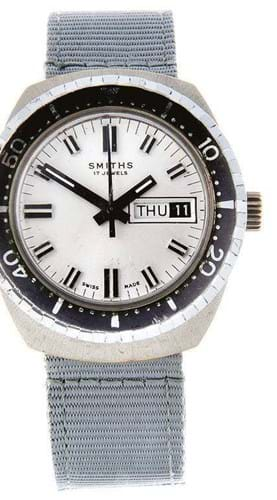
At the budget end of the market for vintage diving watches, this Smiths model from the 1970s has a guide of £120-180 at Fellows in Birmingham on March 15.
How would you characterise the current market for women’s vs men’s watches?
Men’s watches are more popular, of course – collecting them is seen as more of a male pursuit and larger watches are generally more sought after. I am quite active in the watches community on social media and this will always be an interesting topic. In recent months, some people have discussed the need to consider the watches market as a whole – not genderising it to the extent that it is.
At the moment, however, we do still speak about the two categories as very separate. In the world of new watches and at auction, most watches are ‘lady’s’ or ‘gentleman’s’ (there are of course ‘mid-size’ pieces.) Looking at vintage pieces, many 20th century lady’s watches are not very popular, unfortunately, but there are some practical issues – many are very small. Many are in yellow gold, which although it is getting more fashionable again, has been out of favour for a while.
There is such a buzz around many men’s watches – take the Paul Newman Daytona for example – with relatively little coverage of ‘important’ women’s watches.
Favourite all-time vintage watch?
That is a very hard question, there are too many. I think I have a favourite from all of the big brands. I like the original Zenith el Primero and the early Breitling Top Time. Of course I love the Omega Speedmaster, who doesn’t? I have to mention Rolex too. I am a big fan of the pre-Daytona chronographs; I just love the role that they played in the journey culminating in the Daytona.
The favourite watch that I own is a Chronographe Suisse. They weren’t a big brand but produced affordable chronograph wrist watches in the mid-20th century.
Most memorable find?
A few years ago I was lucky enough to handle the sale of a Tudor Monte Carlo Homeplate. Anyone that knows me will tell you I still talk about it.
It had a great story with it: the owner had worn it to go diving and used it when he was a car racing navigator. It sold for £16,000. I actually spoke about it at a conference at Christie’s Education in 2019 where I explored the importance of keeping the biography of an object alive.
I would love to own one; they are quite rare as they weren’t produced for too long. Tudor did revive the piece and you can get modern versions but the romance is with the originals for me.
Favourite ‘affordable’ vintage watch?
There are so many if you take the time to look. I am a fan of Roamer. After more than a century, the firm is still operating today and you can pick up a stainless steel manual wind watch by them for around £40-80.
Diving watches are extremely popular at the moment. Those by Rolex and the other brands command high prices but I have found a number of vintage dive watches from many brands for around £100-200 – these have all the period style without the price tag.
Favourite daily wearer?
I wear my Chronographe Suisse the most, but my 1960s Certina is an equally versatile watch. Clean plain white dial with Arabic numerals, on a leather strap – you can’t go wrong with that.
Best ‘forgotten’ maker?
I would have to say someone like Roamer – they have a long history but their pieces go under the radar. I love the variety of pieces you can find at auction.
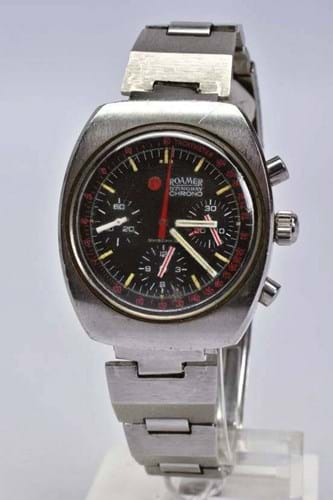
The chunky 1970s Roamer Stingray Chrono that can bring close to four figures. The example here sold for £680 (plus 20% buyer’s premium) at Richard Winterton in June 2020.
I have one from the 1930s too, it is so different from my 1960s one. It is about finding what you like yourself, though; my best advice is get on thesaleroom.com and start looking. You’ll soon settle on a style or brand and go from there.



